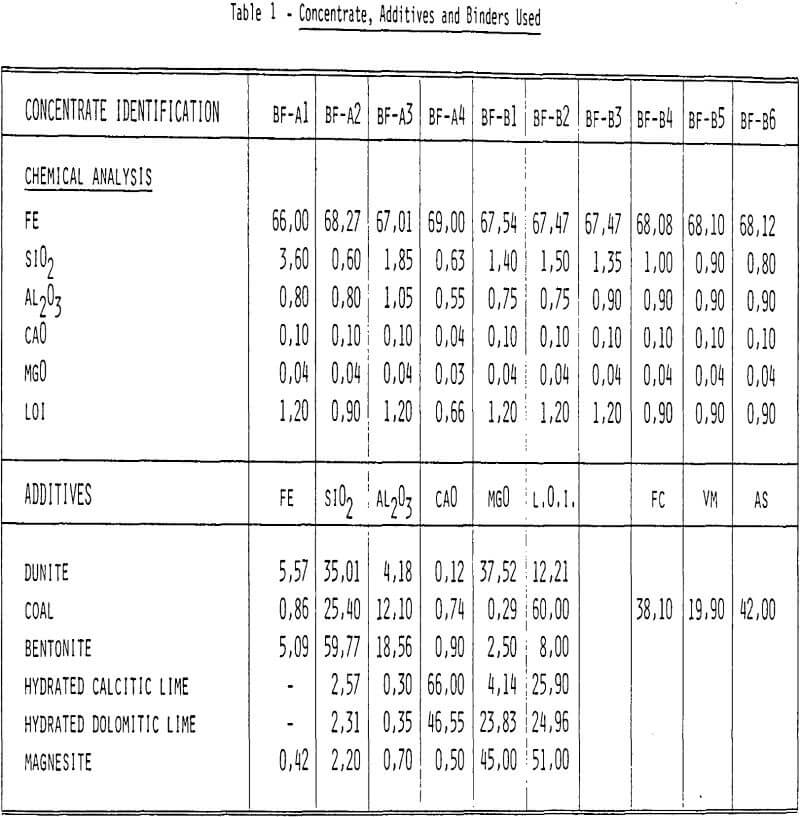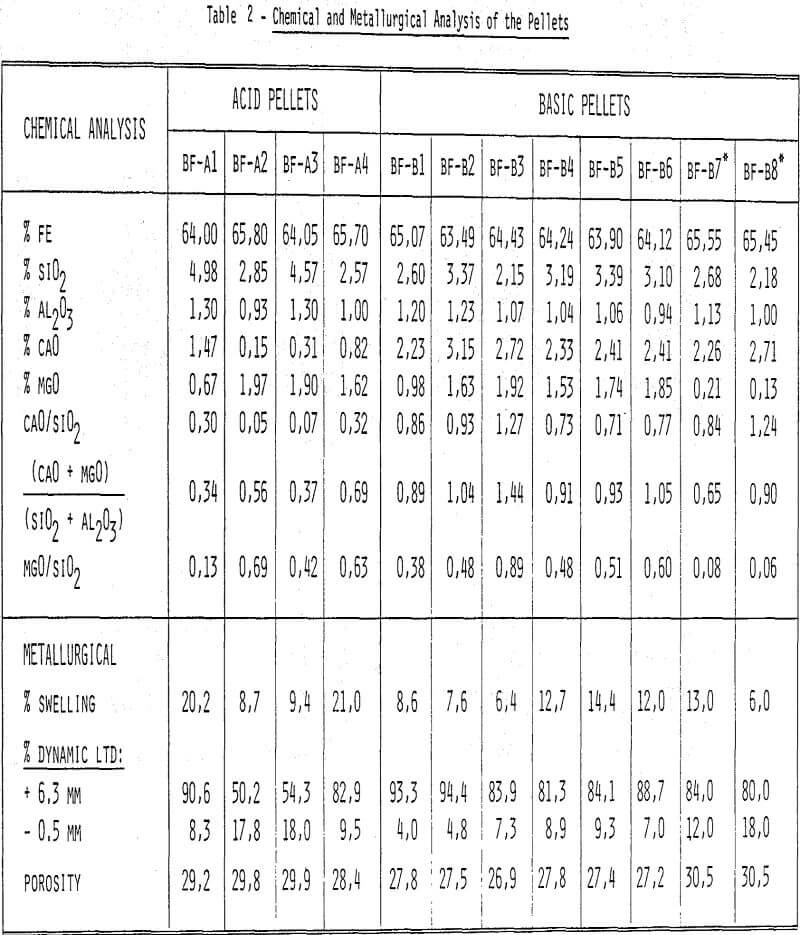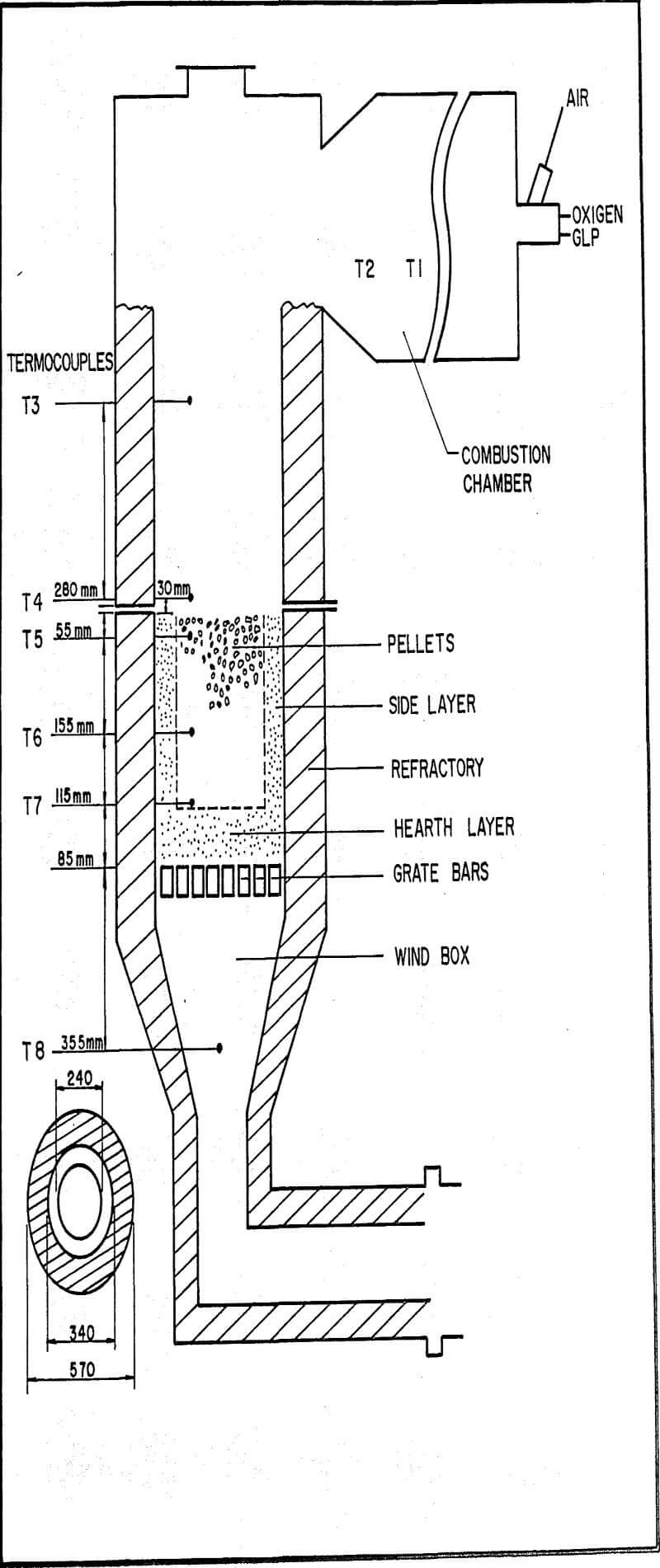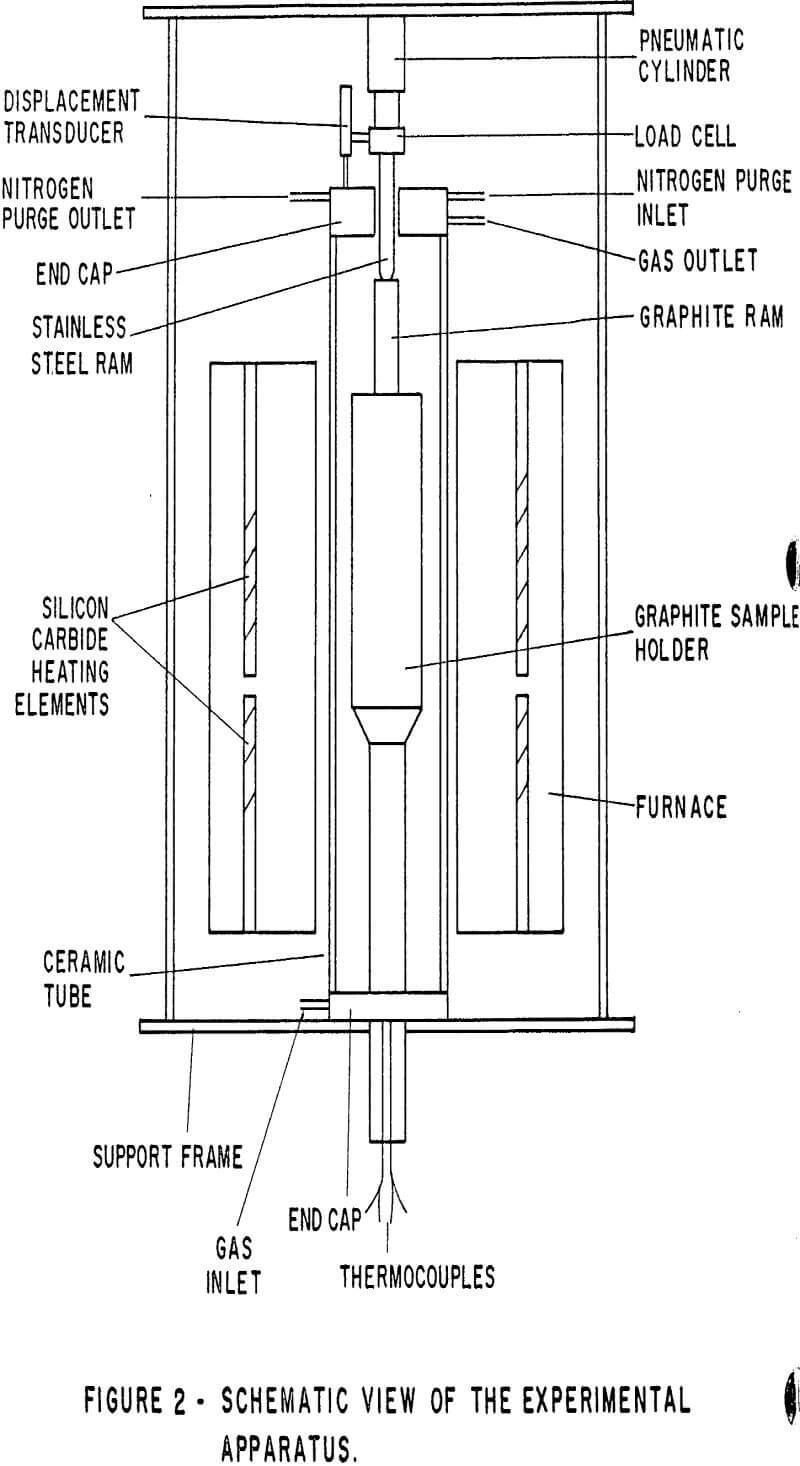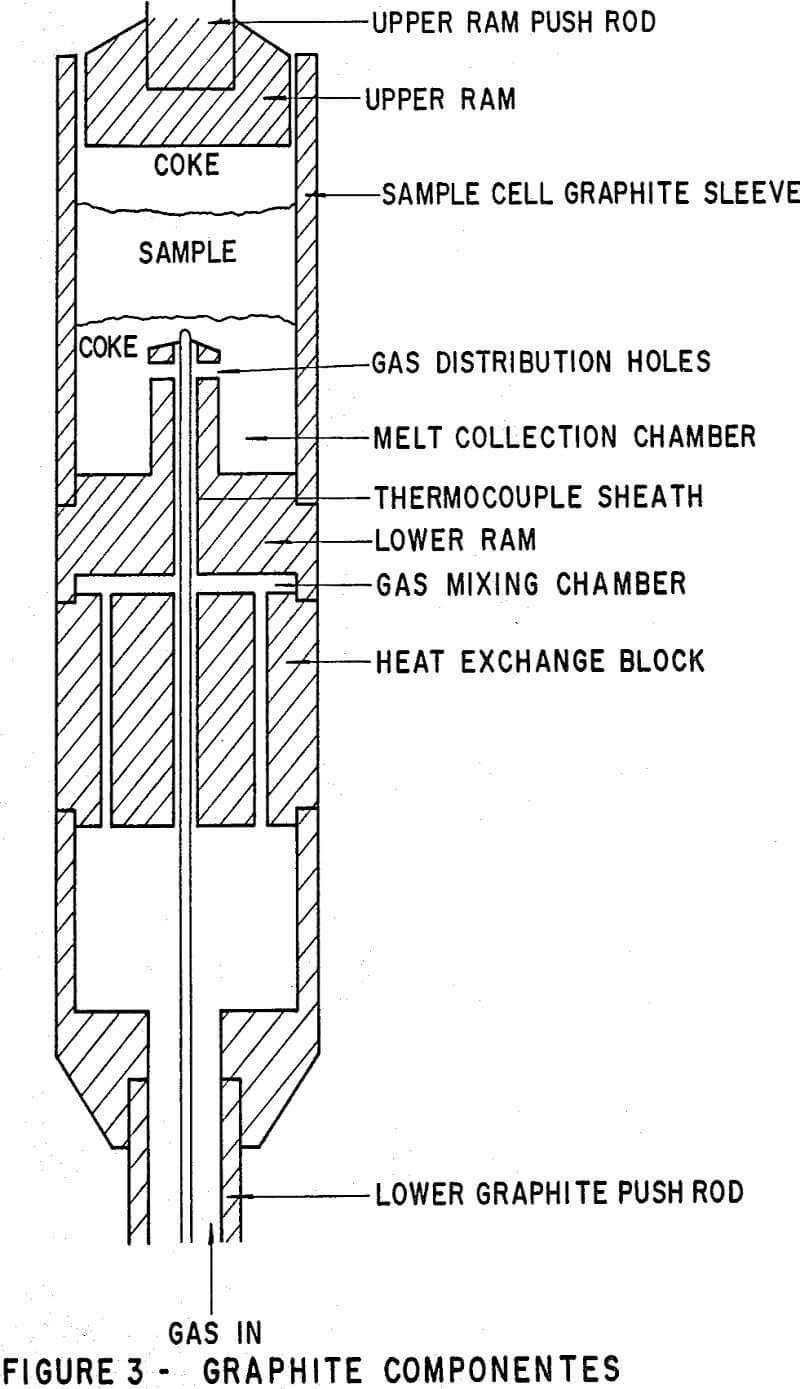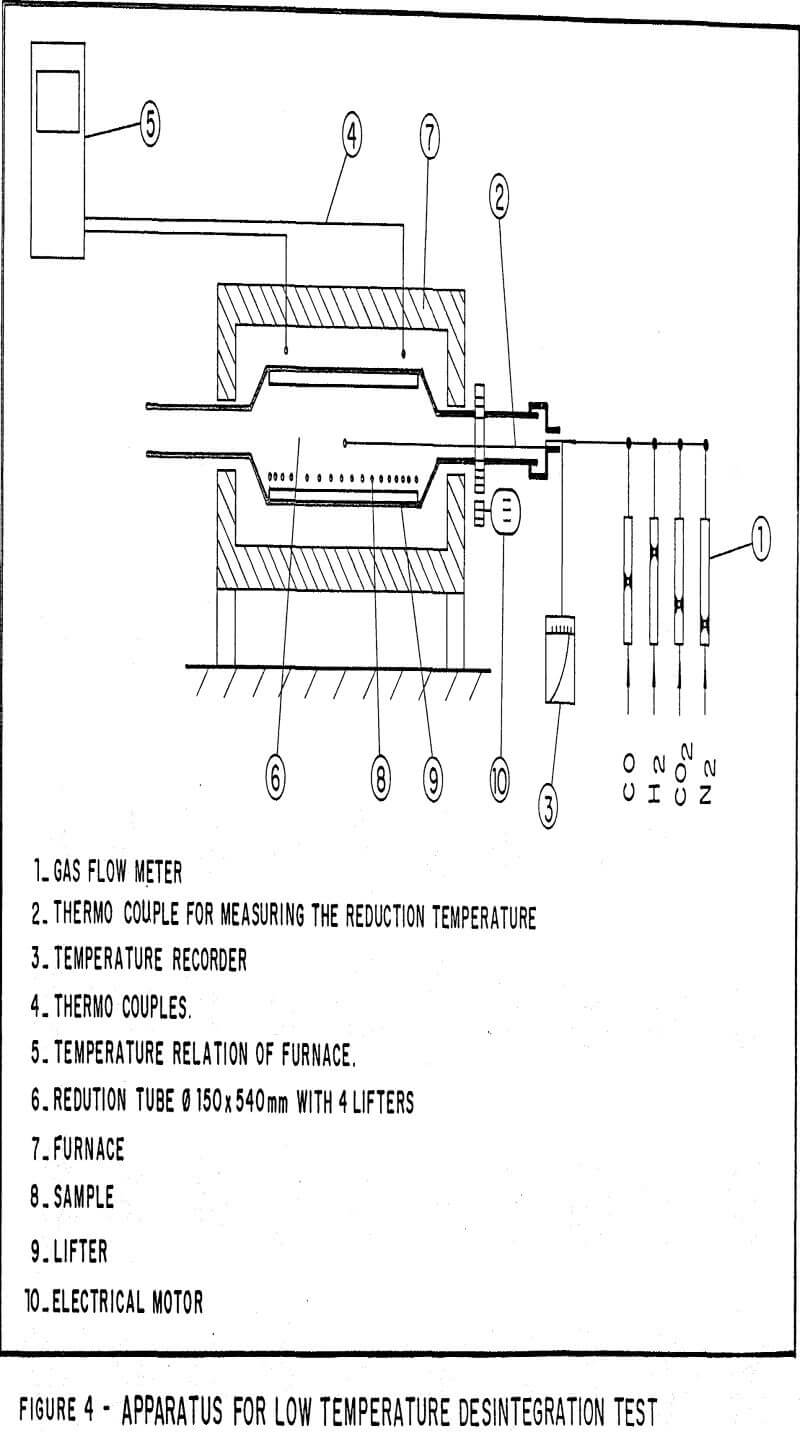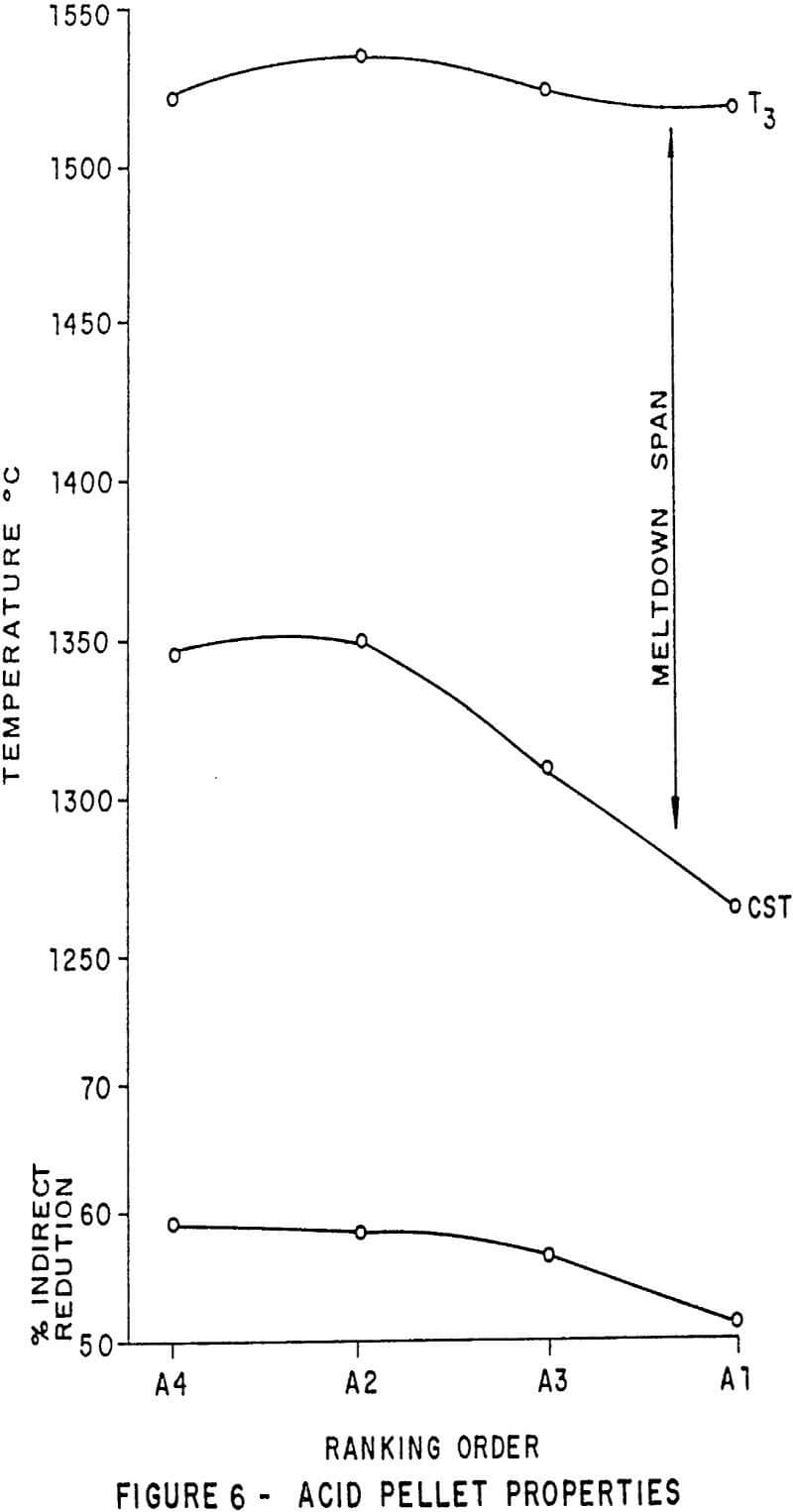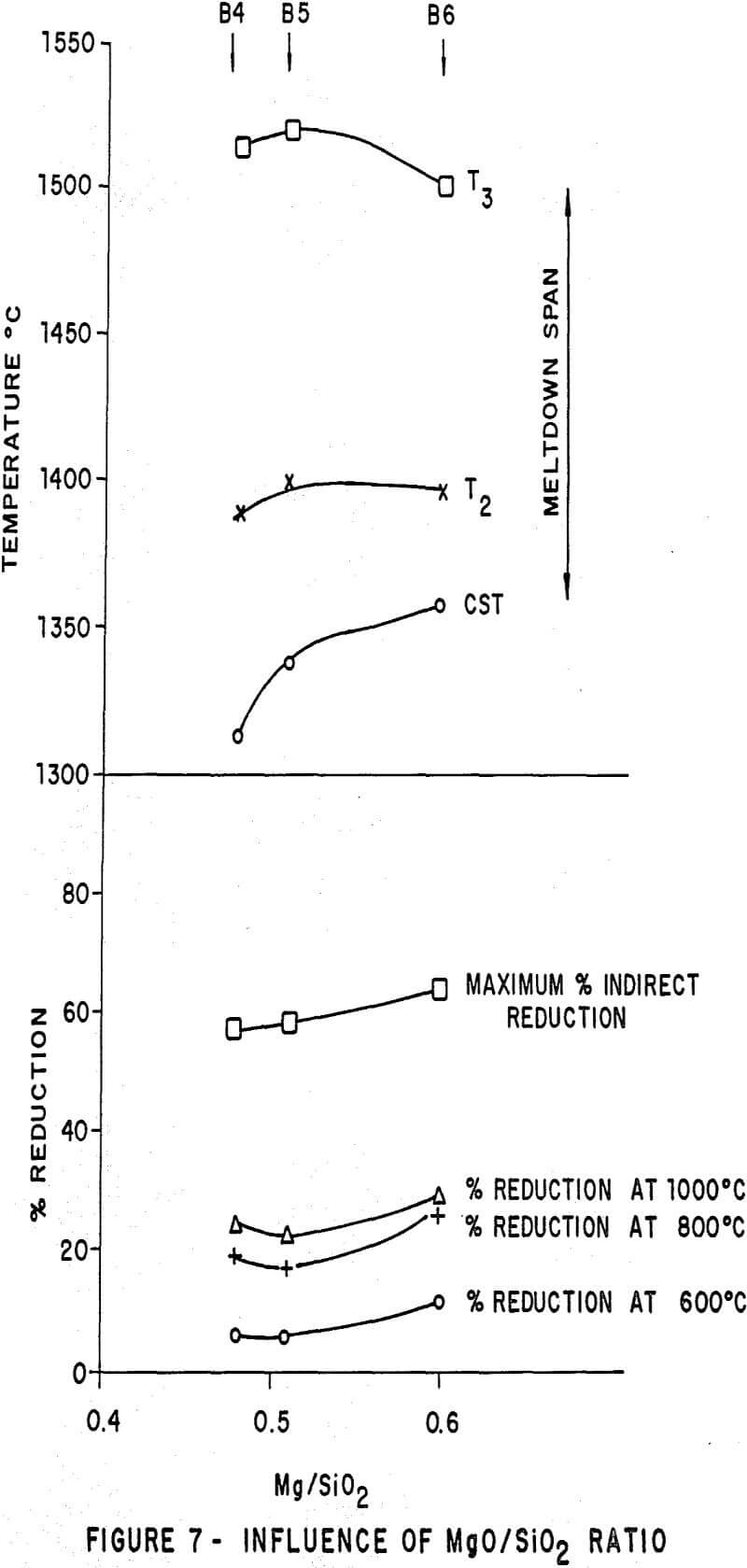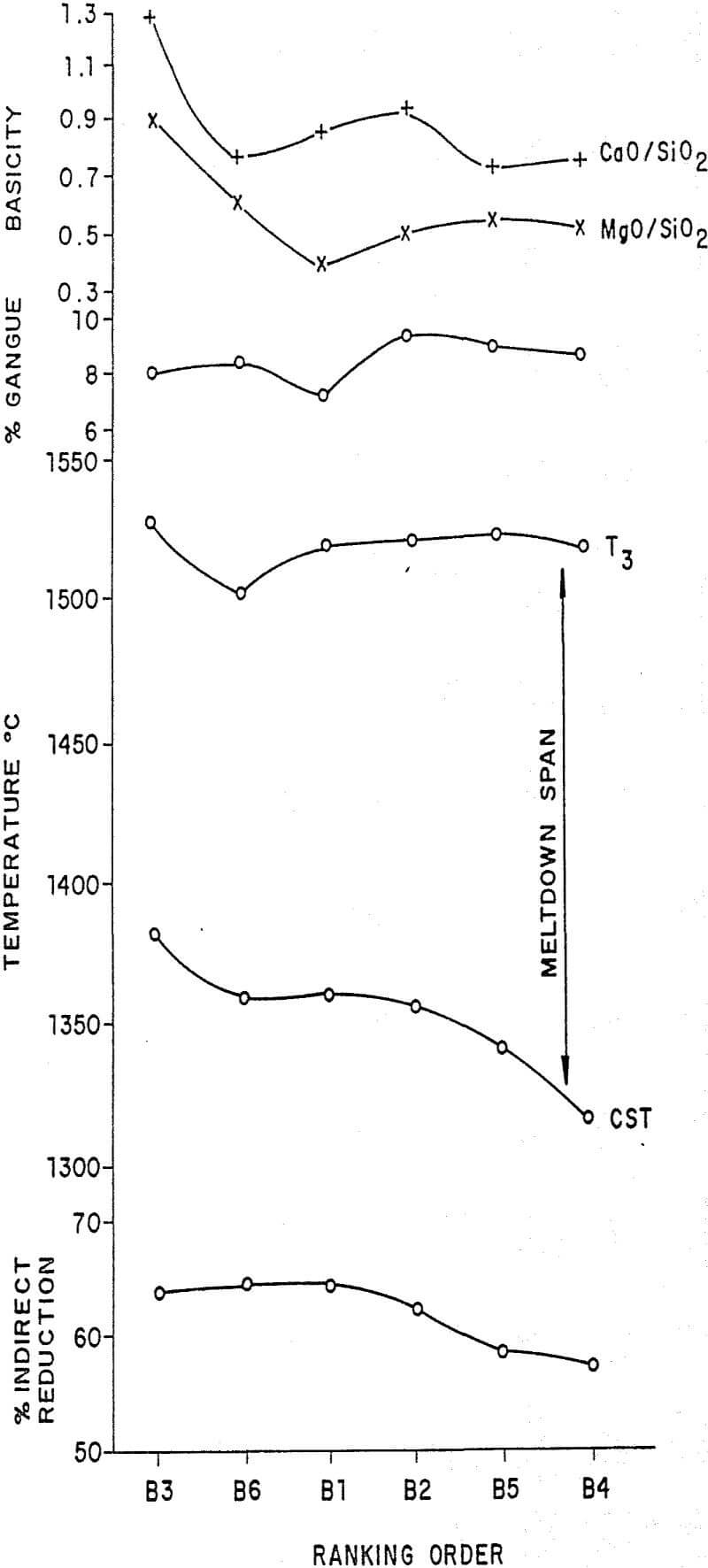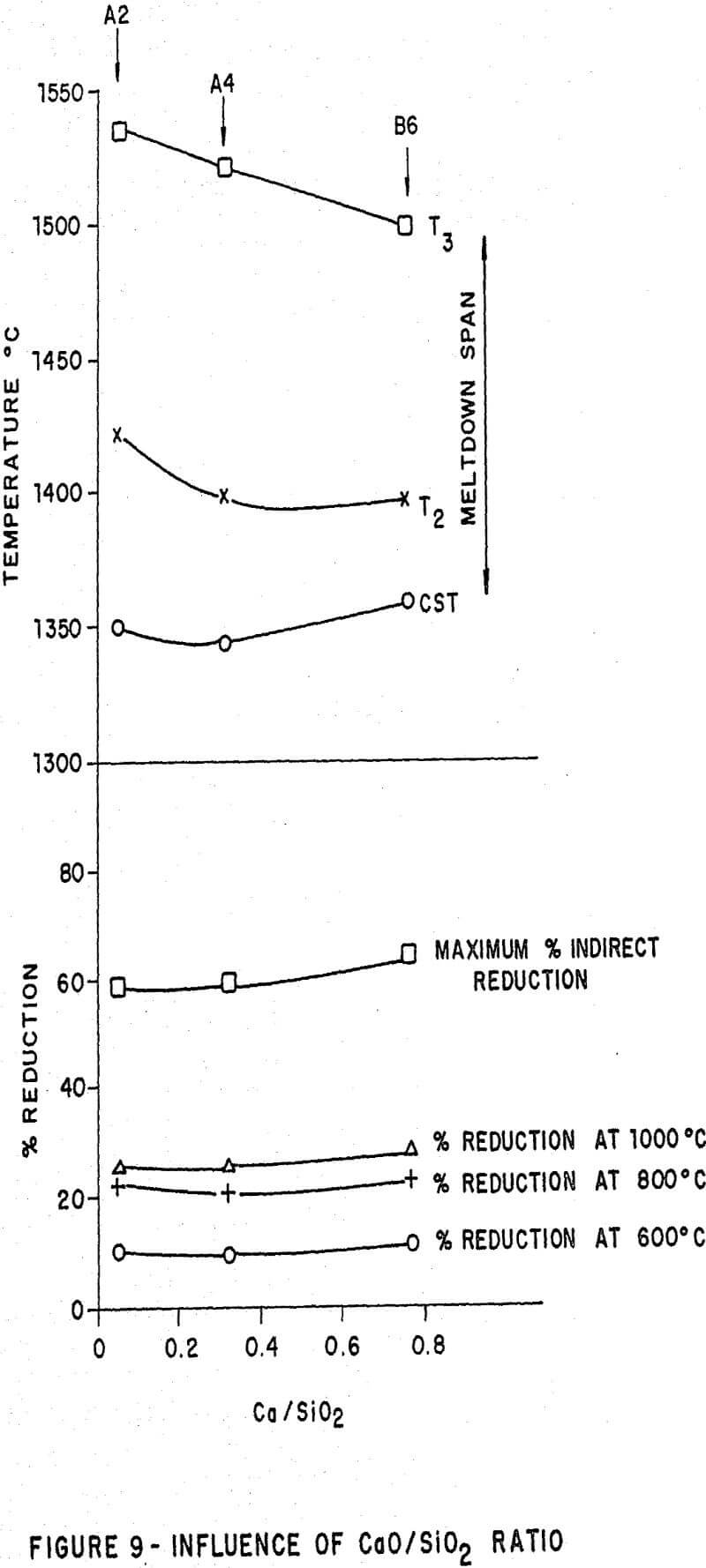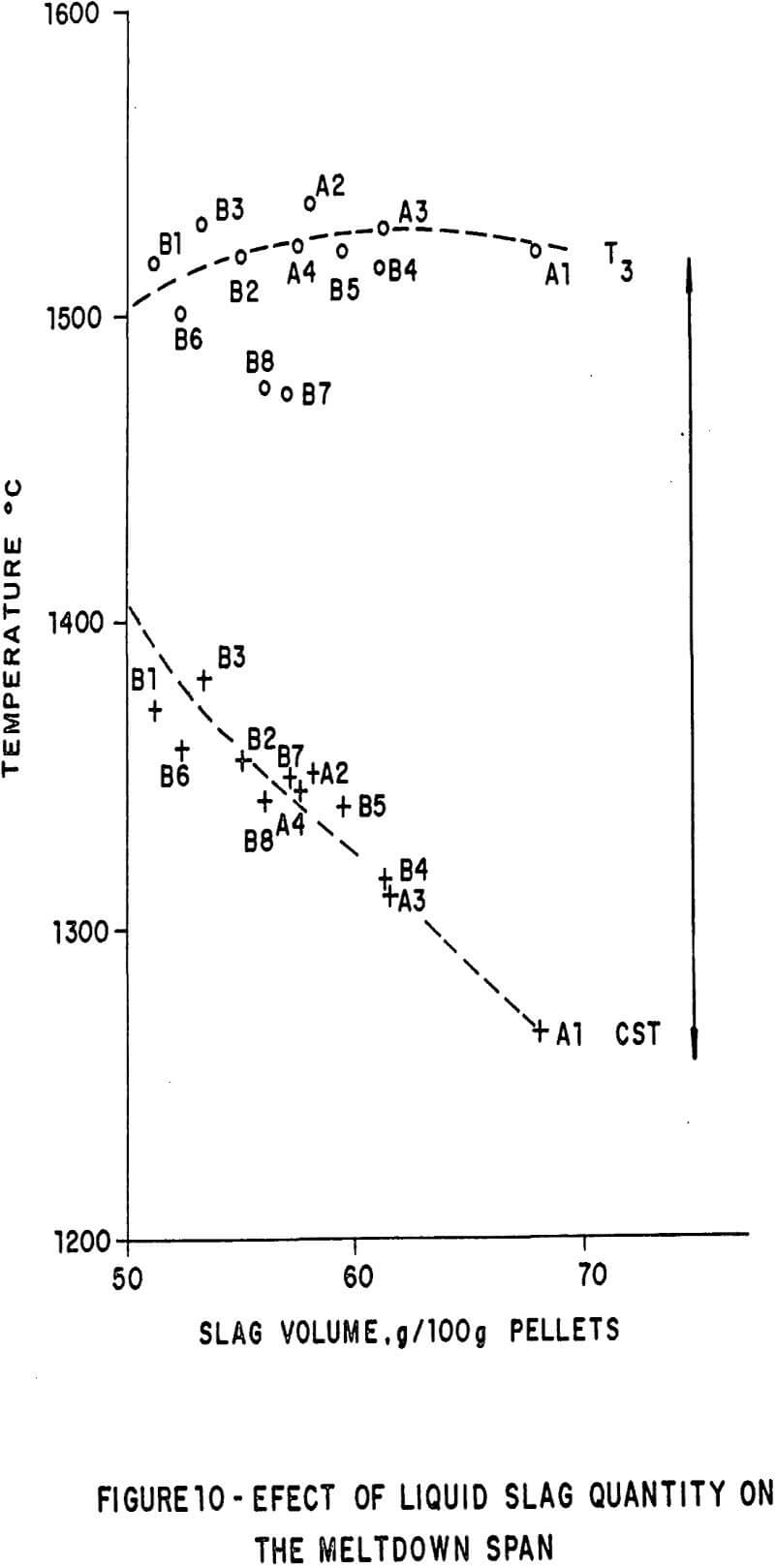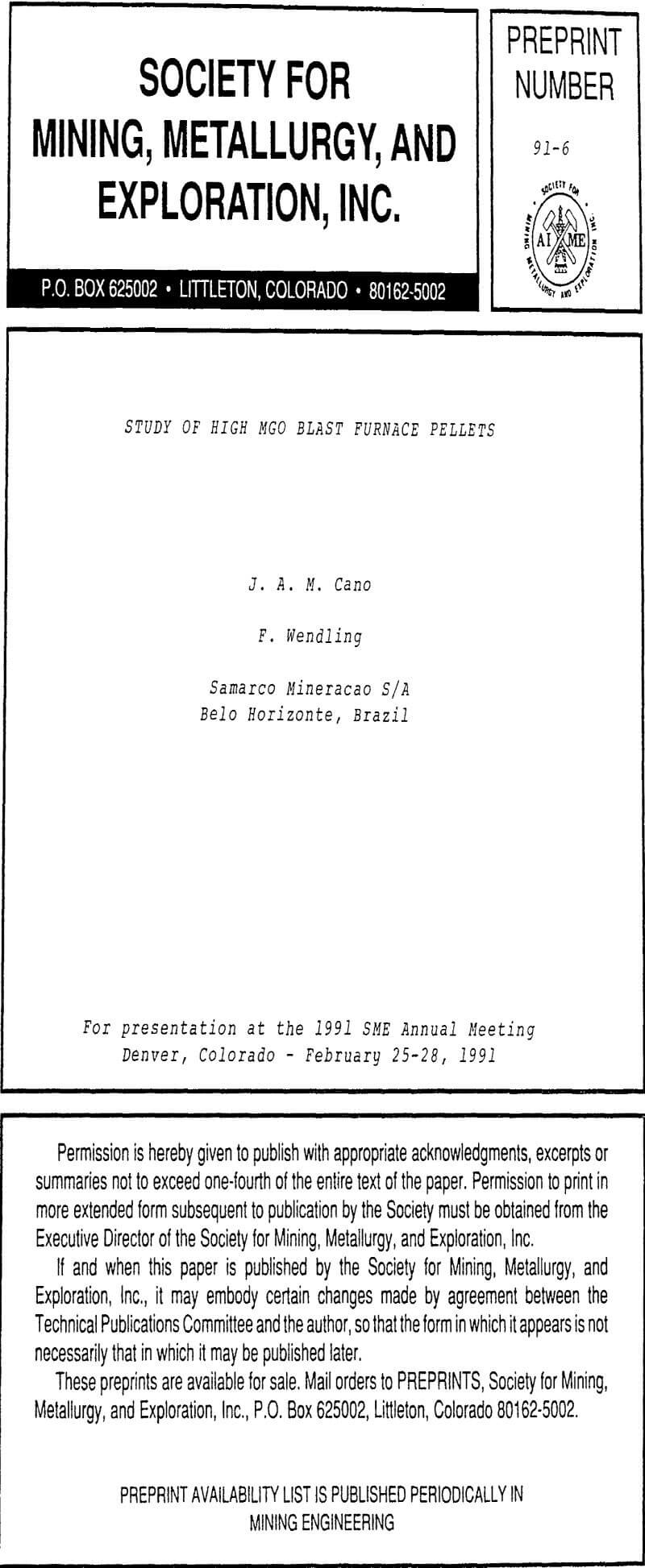The pellets were produced in the pilot plant, and followed the steps bellow:
– Definition of pellet chemistry
– Model for high MgO blast furnace
– Pellet production run
Pellet chemistry was defined based on the fact that high MgO levels have the capacity to attain improved softening and melting characteristics. Therefore the chemical properties of blast furnace pellets comprise a wide range of MgO levels as well as of binary and quaternary basicity levels.
The blend of materials was determinated through chemical analysis of’ each component to be used in the pelletizing process, thus permitting working out the percentages of raw material input.
Softening and Melting Mechanism With Pellets
The softening and melting test is designed to simulate the blast furnace process from stockline to the dripping zone. It provides details of the softening and melting behavior of blast furnace burden materials.
Some indices are considered more important in characterizing the softening and melting properties of blast furnace burden material. They are:
– Maximum % indirect reduction
– CST (Carbon Start Temperature)
– T3 (temp. at the end of the melting process)
– % residual material
Ideally the % indirect reduction and CST should be high, as this should lead to a lowering of the cohesive zone in the blast furnace, giving a reduction in the fuel rate.
Significance of The Results
Examining the results of chemical and metallurgical tests indicated that A2 – A3 acid blast furnace pellets with less 0.1 CaO/ SiO2 basicity had high dynamic LTD values, 17.8% and 18.0% and low swelling levels of 8.7% and 9.4% respectively.
On the other hand, A1 – A4 acid pellets with a CaO/ SiO2 ratio around 0.30 showed low dynamic LTD levels of 8.3% and 9.5% and high swelling levels of 20.2% and 21.0% respectively.
The basic pellets a as a function of MgO/ SiO2 ratio. As the MgO/ SiO2 ratio increases, within the range of chemistry examined, the softening and melting properties improve substantially.
The higher the MgO/ SiO2 ratio, the higher the % indirect reduction, CST and the narrower the meltdown span or cohesive zone width. Hence with B4 – B6, there is clear evidence of the influence of the MgO/ SiO2 ratio upon the softening and melting properties.
Pellets A2, A4 and B6 provide some evidence of the influence of the CaO/SiO2 ratio upon the softening and melting properties. These pellets have reasonably similar silica contents and MgO/SiO2 ratios.
